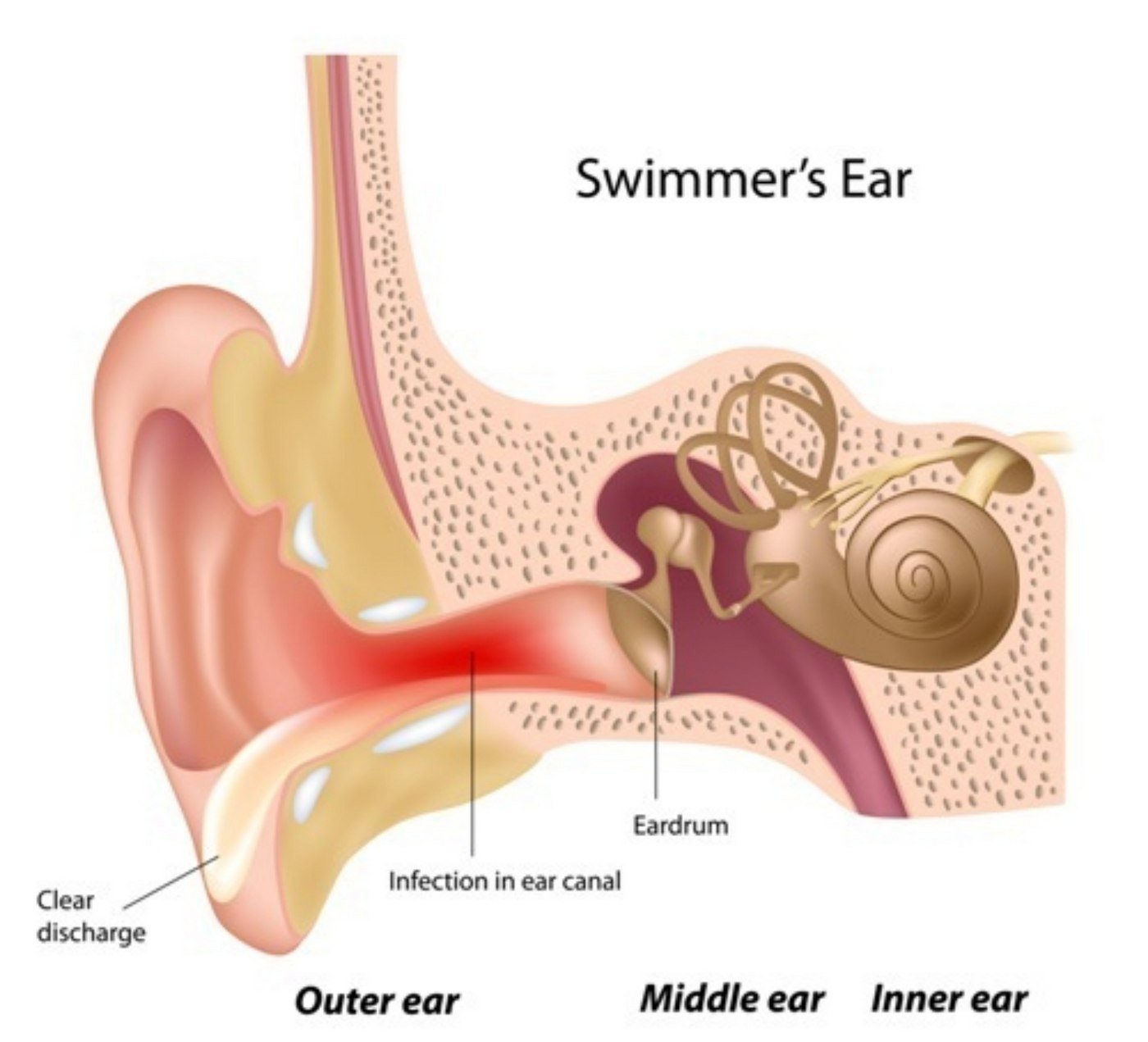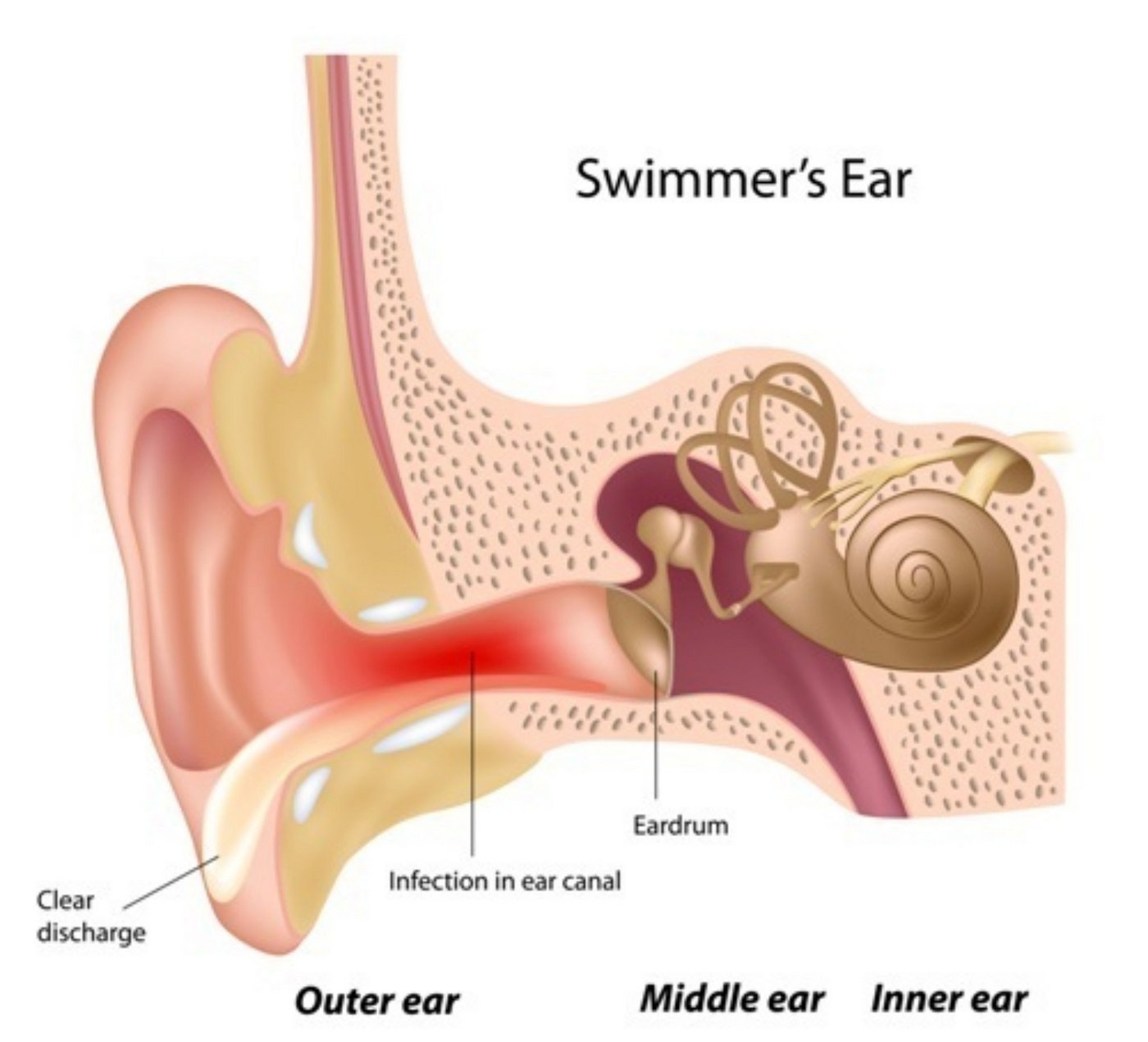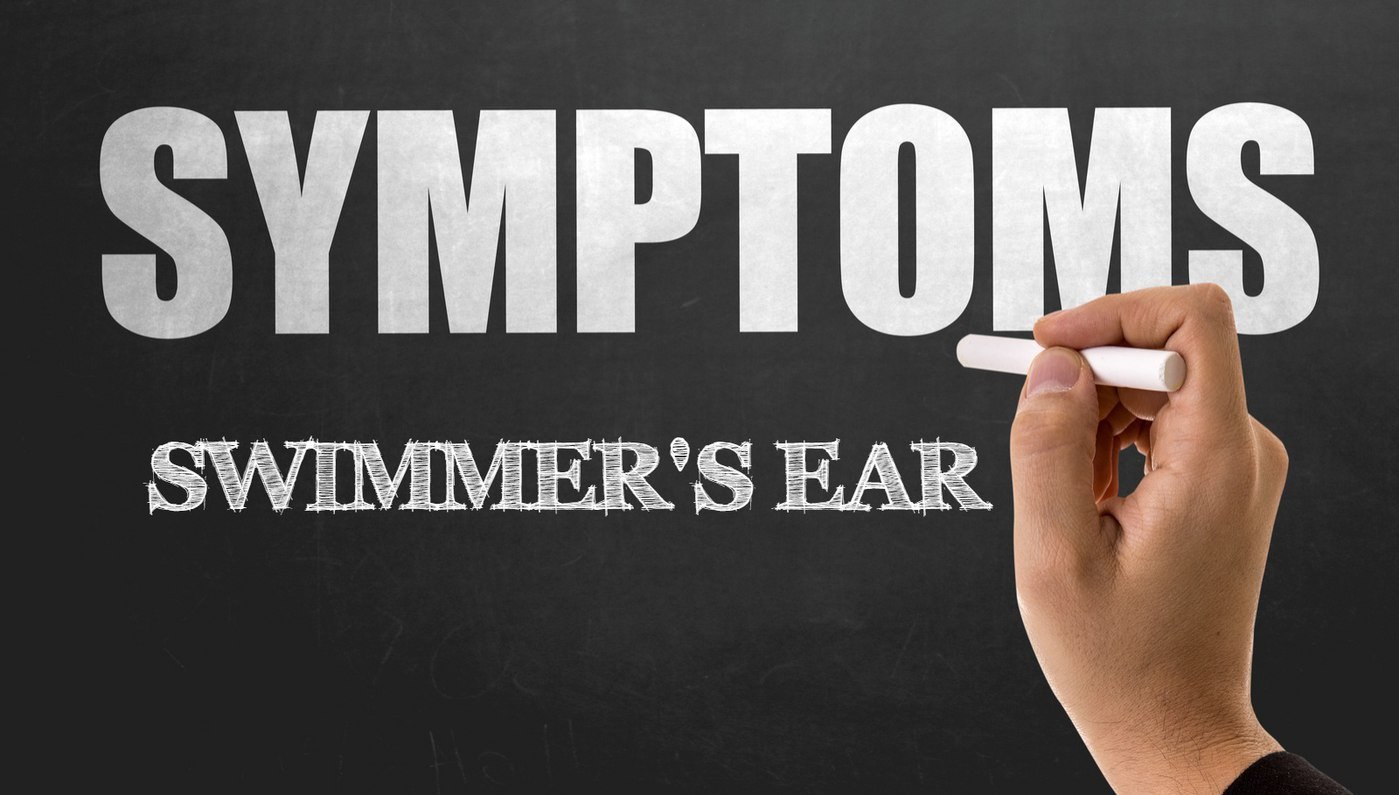What is Otitis Externa (Swimmers Ear)? (Symptoms, Causes, and Treatment Options)
April 16th, 2018 | 5 min. read


Otitis externa was commonly known as “swimmer’s ear” is the irritation or inflammation of the ear canal. There have been millions of reported cases of acute otitis externa in the United States which accorded to the Center for Disease Control and Prevention (CDC) has resulted in more than 2.4 million patient health care visits annually.
And, with the hot summers, here in Texas, its common for children and adults alike to develop the condition after taking a swim to cool off. Below, you can learn about the signs, causes, treatment and prevention of swimmers ear.
What Is Swimmers Ear?
This ear infection has been referred to as swimmers ear for years because it tends to affect individuals who spend a lot of time underwater, such as swimmers. Bacteria and germs easily accumulate in swimming pools. When contaminated water gets trapped in the ear canal infection can occur. Both children and adults can develop swimmers ear but individuals who have eczema or experience excess earwax are more susceptible to contracting otitis externa.
What makes otitis externa different from other forms of ear infections is that it typically affects the outer ear canal which is responsible for carrying sound outside the body directly to the eardrum. Otitis externa can occur in mild and chronic forms. It can last for a few short days or for a long period of time. It all depends on the individual.
schedule an appointment today for swimmer's Ear evaluation and Treatment in Houston, TX
Schedule an appointment today to be treated for swimmer's ear at any one of our 10 convenient locations throughout Houston.
What Causes Otitis Externa?
As previously discussed, otitis externa involves the infection of the skin in the ear canal. The ear canal is a warm and narrow tunnel which makes for the perfect place for germs to harbor if given the chance. Here are some of the most common causes of this type of ear infection:
Exposure to Moisture
Although otitis externa has been referred to as “swimmers ear” it doesn’t just occur in children and adults who spend a lot of time in swimming pools. Moisture from showers, bath, and other wet environments can be a major contributing factor. Acute otitis externa results from common fungi and bacteria such as; Streptococcus, Pseudomonas, and staphylococcus that can sometimes exist in moist environments. Exposure to bacteria that is present in hot tubs, swimming pools, or generally in unclean water can cause otitis externa.
Allowing Substances to Enter Ear Canal
Otitis externa can be a result of irritation to the outer ear canal. Damaging the skin in the ear canal through scratching or poking will eventually lead to inflammation. However, when you get shampoo, hairspray or any other chemicals touch the inflamed skin you can expect to develop an infection. The skin in the ear canal is super sensitive.
Humidity
Severe humid weather — like what we experience here in Houston — can increase one’s chance of developing otitis externa since humidity can lead to lots of sweating.
Preexisting Skin Conditions
Individuals who are already suffering from skin conditions like psoriasis and eczema are likely to develop otitis externa. In severe cases, these skin ailments can begin to affect the ear canal making the skin in the outer canal flaky and inflamed.
Earwax
While wax can help protect the ear canal from outside infection, when it starts to build up excessively it will begin to irritate the outer skin of the canal. Attempting to remove wax with cotton swabs or other objects will cause infection. Also, when water becomes trapped behind excessive wax you can expect the infection to occur in the outer portion of the canal.
Swimmers ear in Houston?
Symptoms of Otitis Externa (Swimmers ear)

Determining whether you have an otitis externa isn’t difficult. Usually, symptoms of swimmers ear start off as mild and can eventually worsen if left untreated. When you visit a physician they’ll diagnose otitis externa based on its stage of progression. Common signs of an outer ear canal infection are persistent itching inside the ear and pain that intensifies when you tug on the outer ear. The itching may be a result of fungus, an allergic reaction or likely from chronic skin inflammation.
In most cases, one ear will be infected but it’s possible to see infection in both. Additional signs and symptoms of otitis externa include:
-
Discharge from the ear canal
-
Pain or discomfort in the ear canal
-
Full or blocked sensation in the ear
-
Severe pain that has spread to the face, neck or side of the head
-
Swollen lymph nodes around the ear and neck
-
In severe cases, there may be some hearing loss
-
Redness and swelling around the ear
-
Difficulty chewing or speaking
When otitis externa is left untreated for a period of time further complications will result. These complications can be:
-
Hearing Loss. In chronic cases, an individual can completely lose hearing capabilities in the infected ear. However, hearing usually returns to normal after it’s been successfully treated.
-
Recurring Infection. Sometimes chronic otitis externa will repeatedly occur if it isn’t properly treated the first time.
-
Damage to Bone and Cartilage. When otitis externa isn’t treated you can expect it to spread to the cranial nerves as well as the base of the skull and brain.
Your Houston ENT doctor will usually diagnose an outer ear canal infection by taking a sample of the discharge and testing it for bacteria. In addition, they’ll examine the ear canal using an otoscope which allows them to examine further down the canal.
Treatment Options for Otitis Externa
What exactly are the treatment options for external otitis? Well, in the early stages of swimmer’s ear it’s typically simple to cure. In fact, careful yet thorough cleaning of the ear canal along with eardrops to stop or prevent the further growth of bacteria or fungi is effective. Mild acidic solutions are also helpful in reducing inflammation. Additional treatment options for swimmer's ear include:
-
Prescription ear drops or sprays that contain a combination of antibiotics and steroids. The antibiotics will treat the infection while the steroids will help reduce itching and inflammation. The ear drops prescribed may even contain chemicals to help restore the canal to a healthy balance. After applying ear drops make sure you lie down with the infected ear facing upward so that the ear can fully absorb the medication.
-
Painkillers may be prescribed for extreme cases to provide relief of severe pain.
-
Depending on the progression, the ear canal may require cleaning by a healthcare professional. The physician will use a gentle suction or irrigation of water to deeply clean the canal. The ear may even be swabbed prior to cleaning to ensure that the antibiotics have been working.
In minor cases of swimmer’s ear, it can treat at home. A natural homemade ear drop remedy can be made use of rubbing alcohol and vinegar. You can use equal halves of each solution. This remedy will help remove excess water from the canal and keep the ears dry.
How to Prevent Swimmers Ear
Preventing swimmer’s ear is much easier than getting rid of it when it occurs. That’s why it’s important to take measures to avoid contract otitis externa. Here are some simple ways you can reduce your chances of getting this type of ear infection:
-
Keep your ears dry. It’s hard for a dry ear to get infected. Therefore, you should try and keep your ears free of moisture. After exposure to water whether through swimming, a bath or shower you can dry the ears by placing a small piece of cotton wool at the entrance of the ear canal. Also, you’ll want to clean the outside of the ear with an alcohol-free baby wipe or dry tissue. However, you should first try and let your ears dry naturally. When swimming, try keeping your ears dry by wearing a tight-fitting swim cap that fits over the ears as well as earplugs.
-
Avoid inserting things into the ear canal even when cleaning. Don’t use cotton swabs to remove earwax because this can push dirt and wax further into the ear and cause irritation. Avoid scratching or poking the inside of your ears.
-
Consider having your ears cleaned and examined by a specialist. This is especially important if you tend to get otitis externa frequently or you have extensive ear wax you might want to.
-
Wear earplugs when swimming or showering. This is important particularly if you’re prone to swimmers ear.
Get Treatment for Swimmers Ear in Houston
Here at Houston ENT & Allergy Services, we’ve helped many patients who have come to us with swimmers ear. If you believe you or your child currently has swimmers ear or seems to develop it on a recurring basis, we can help. Give us a call at 281-623-1312 or request an important here.


